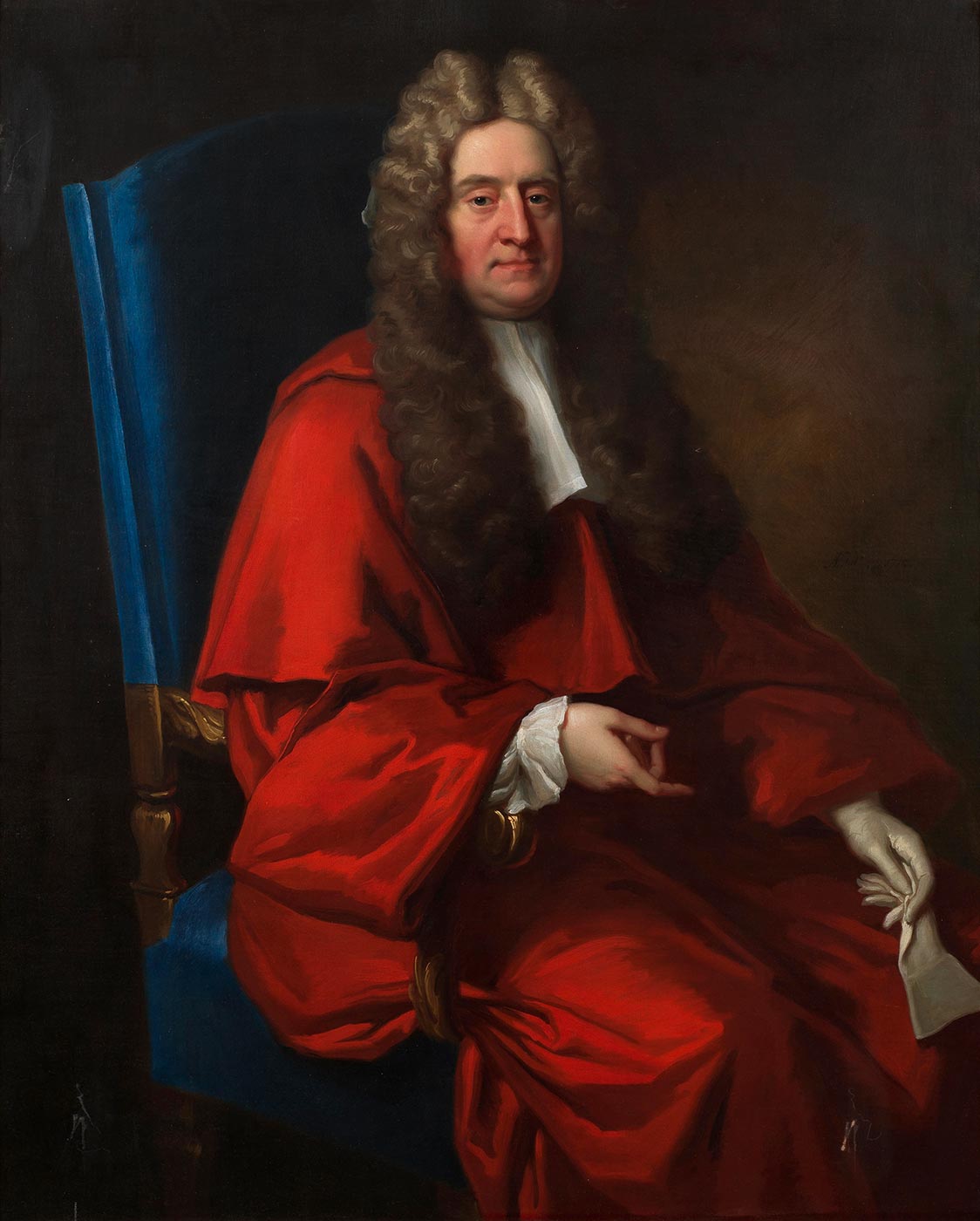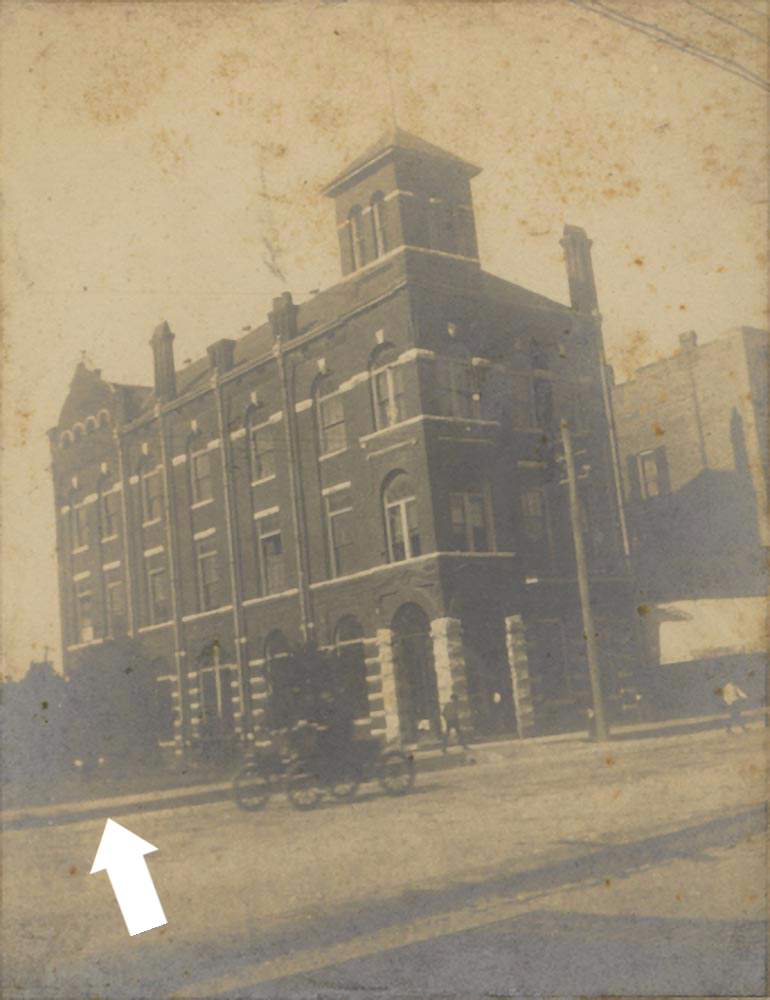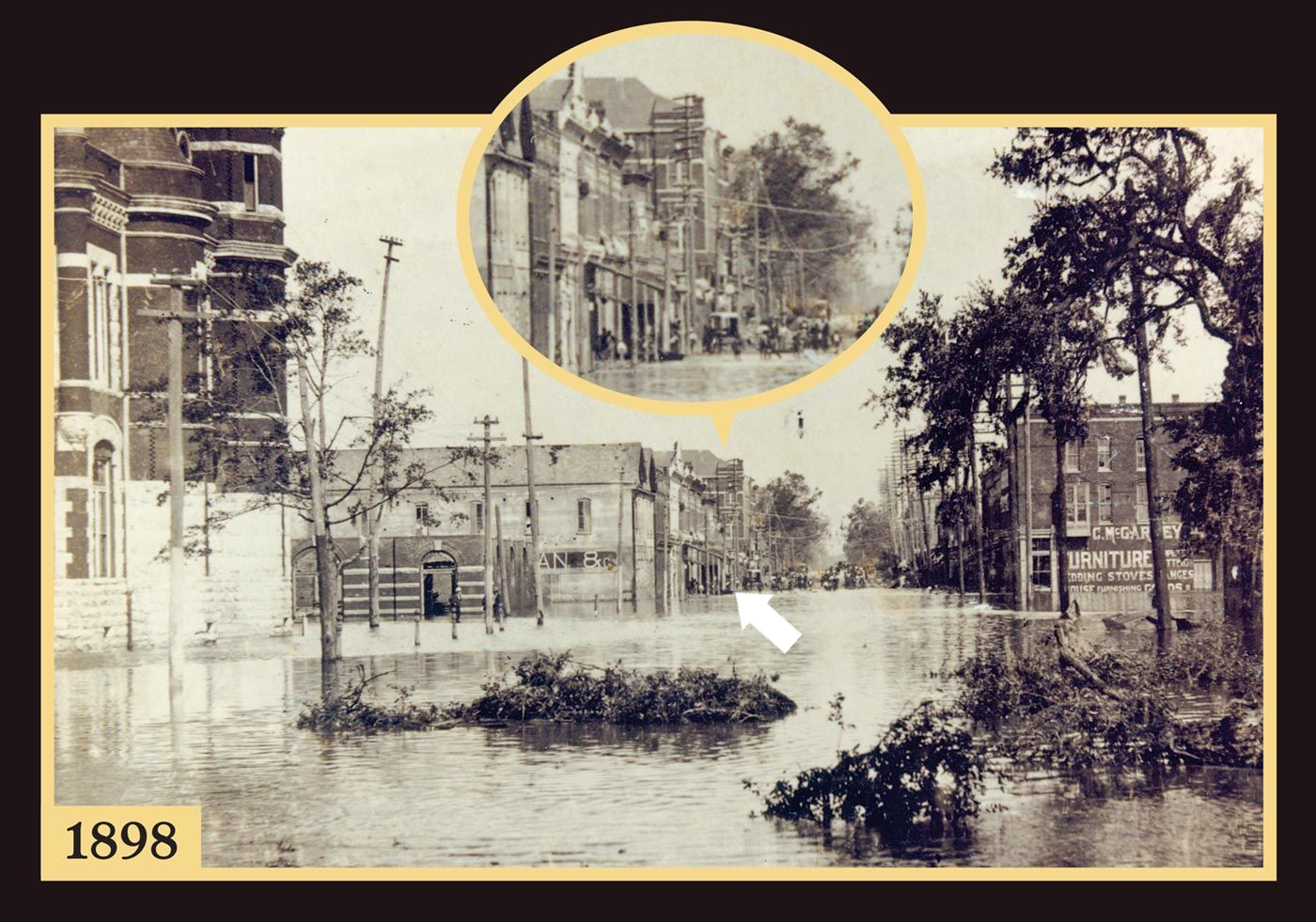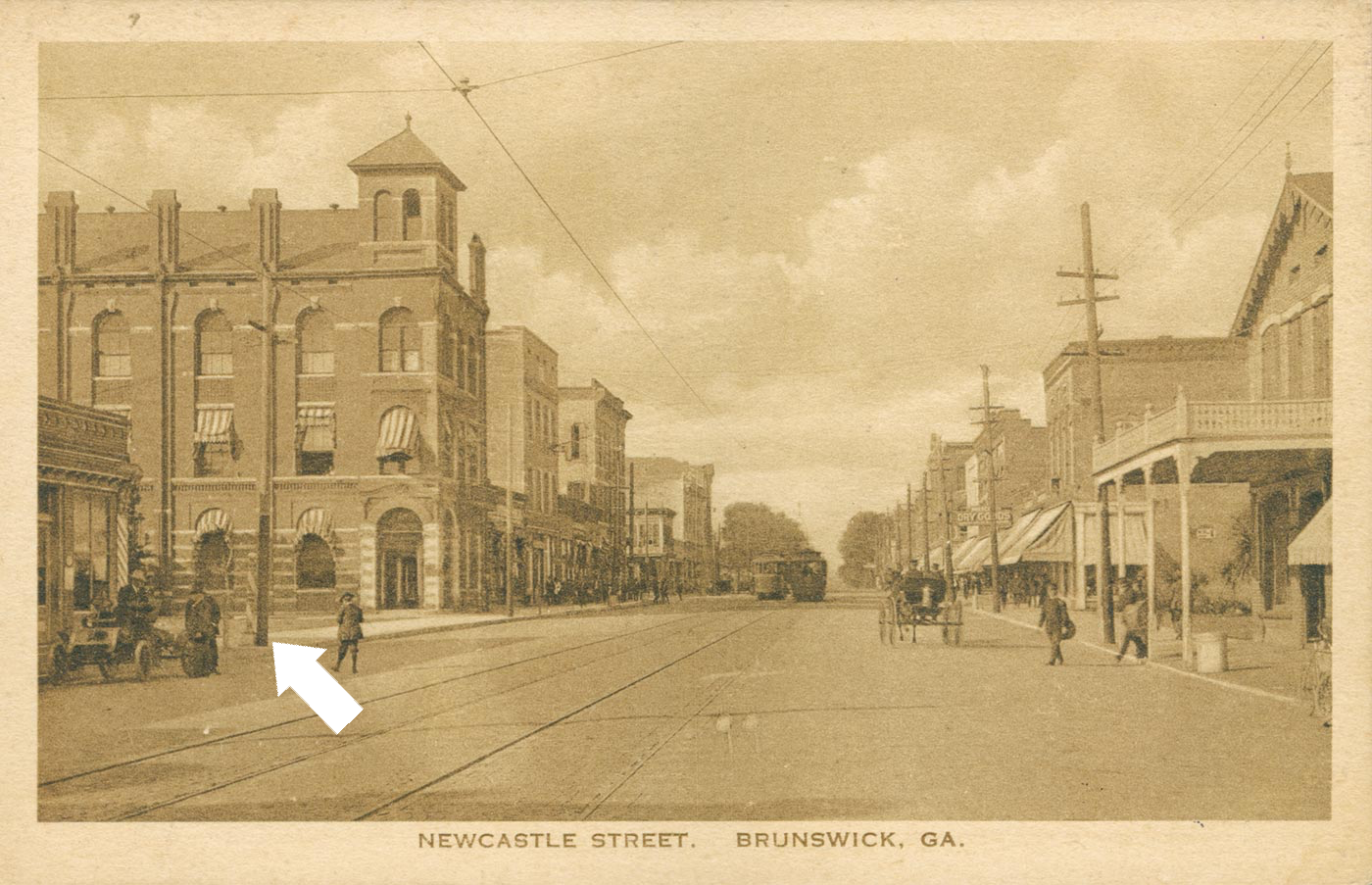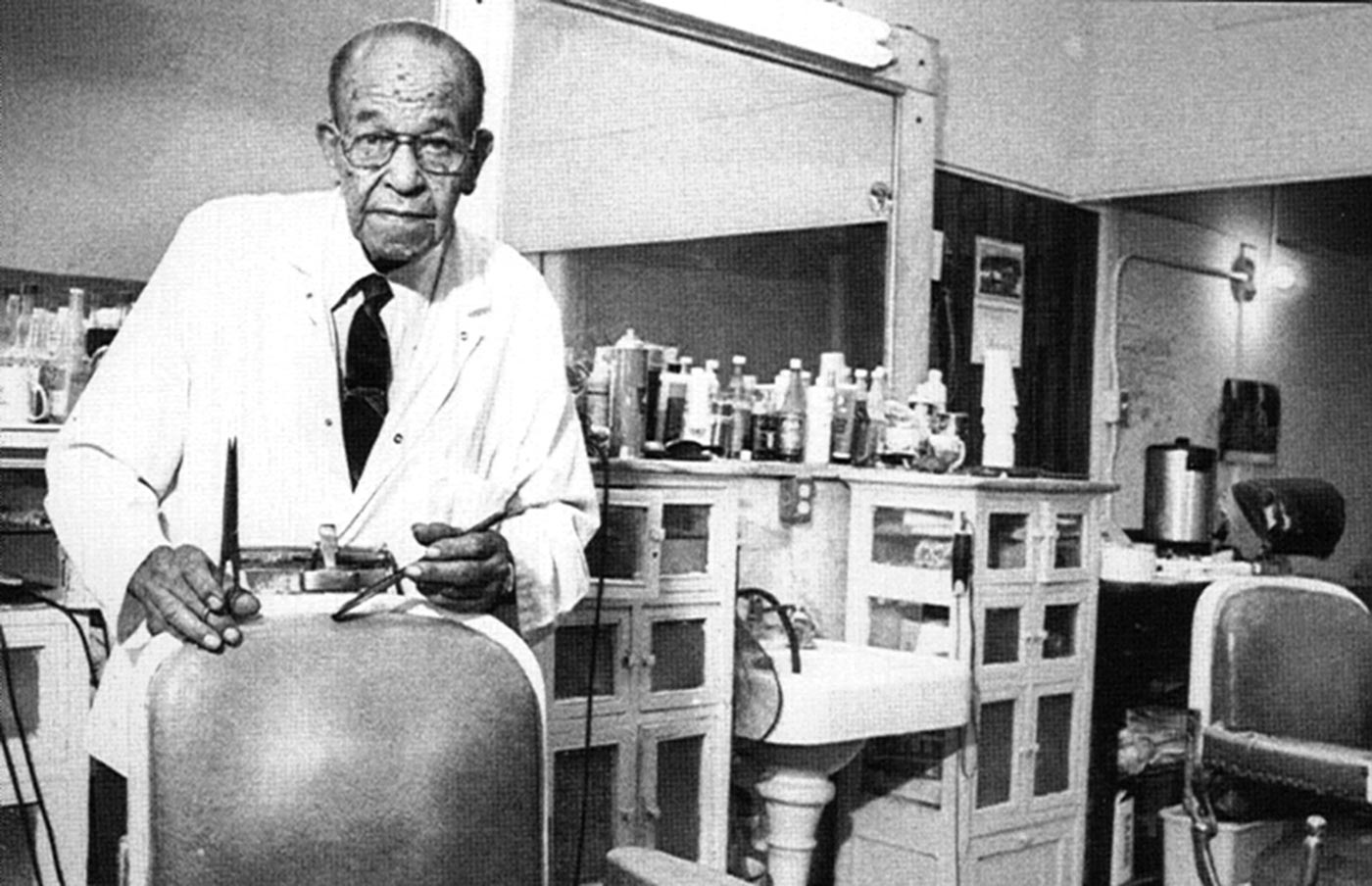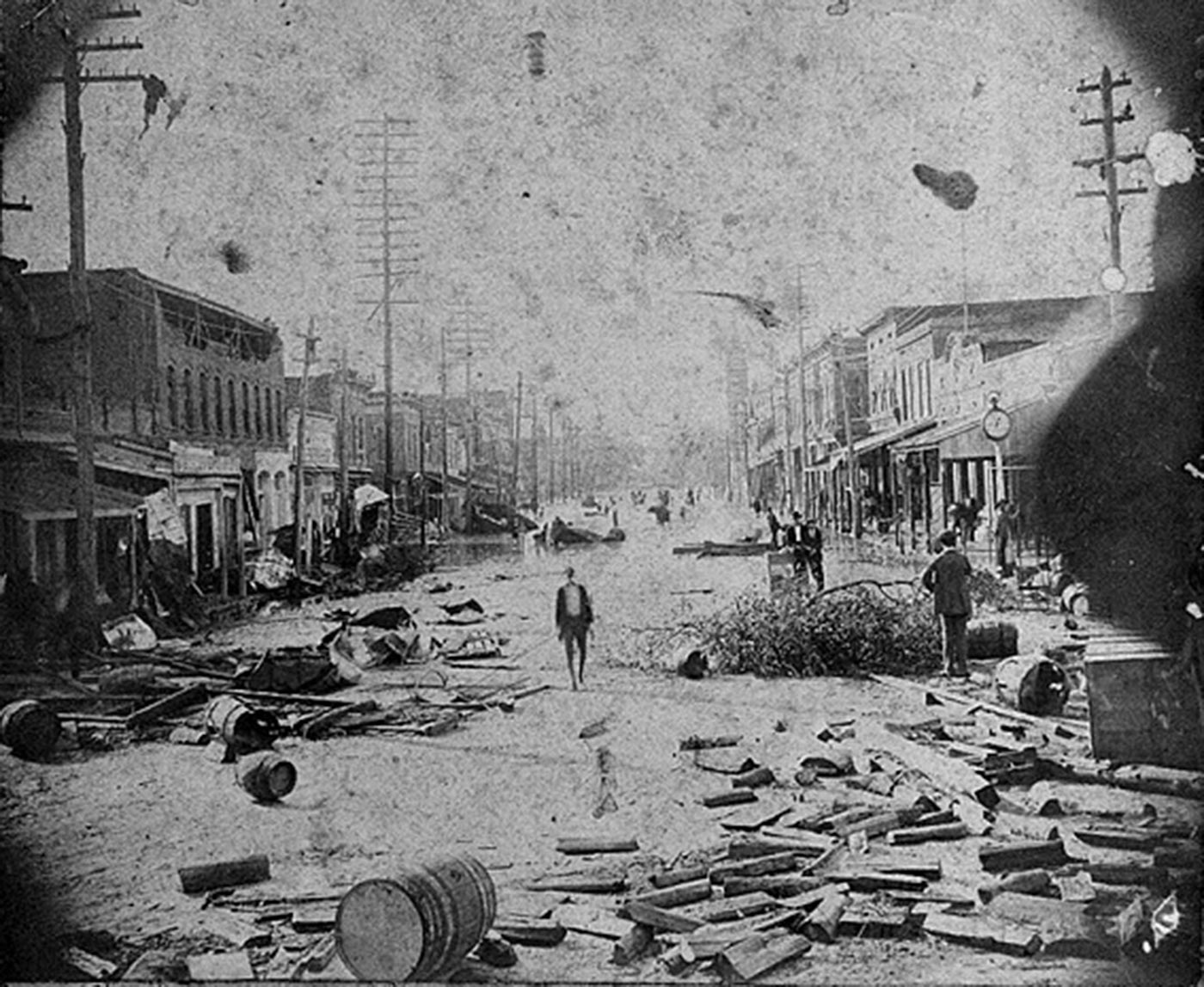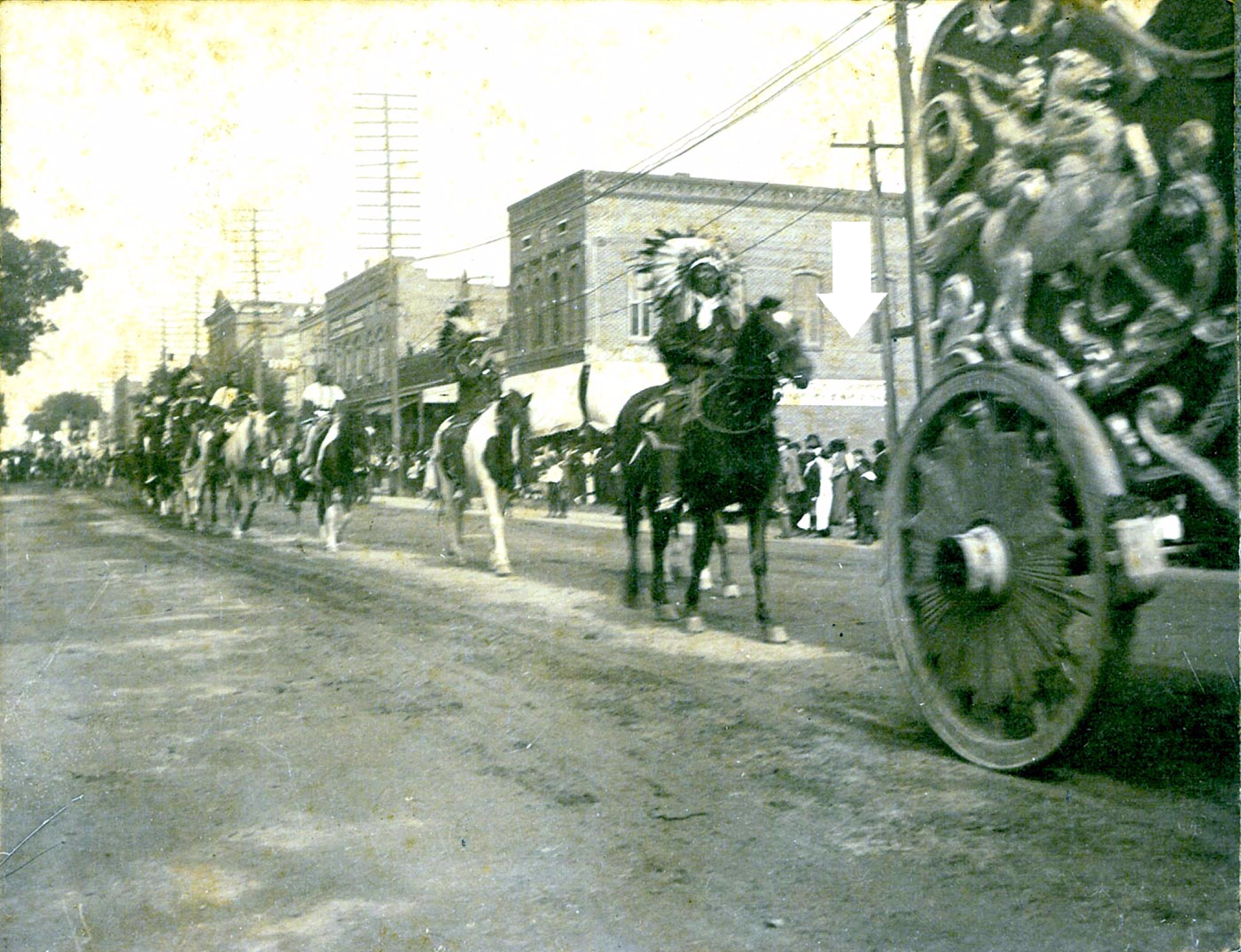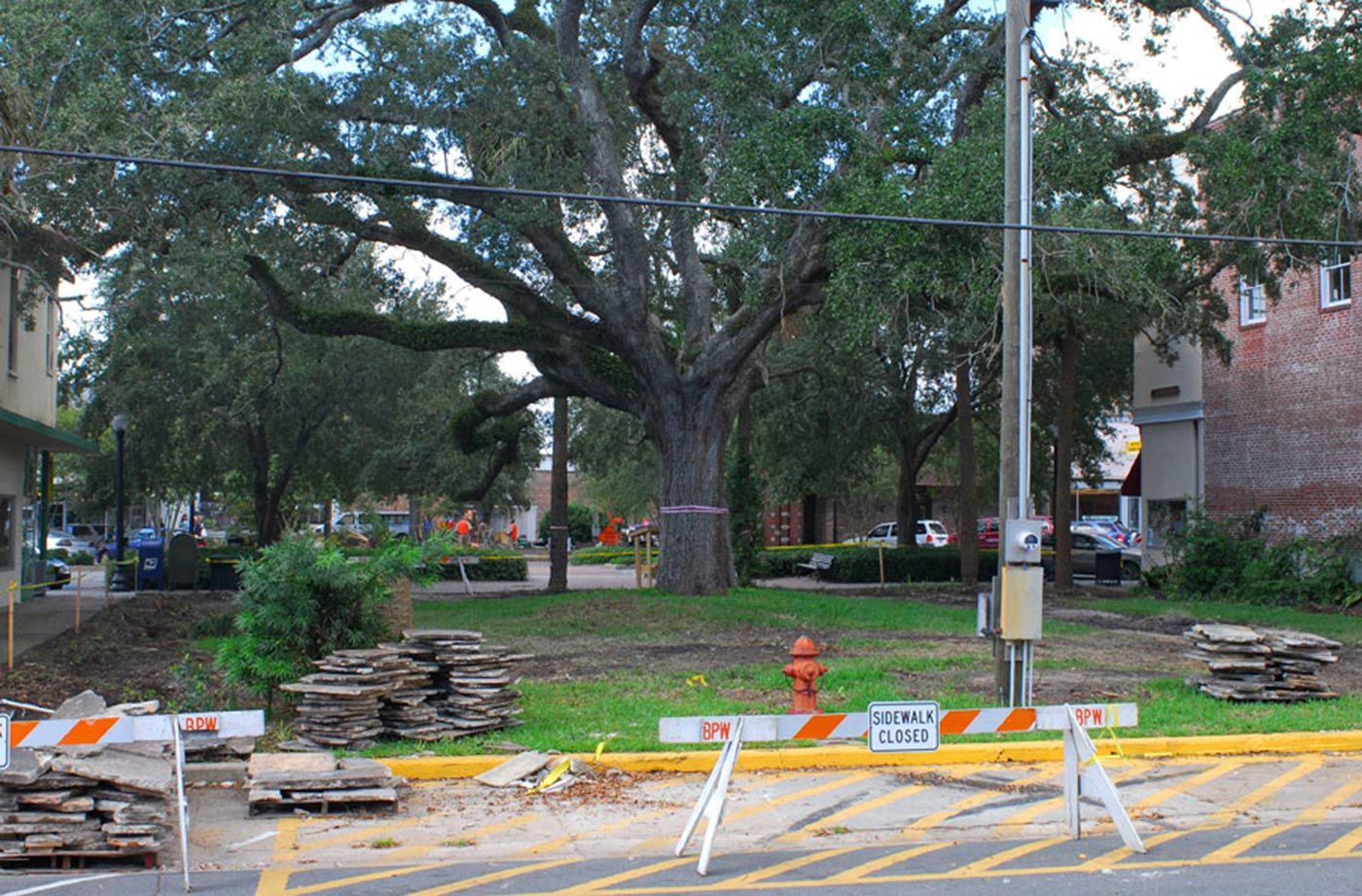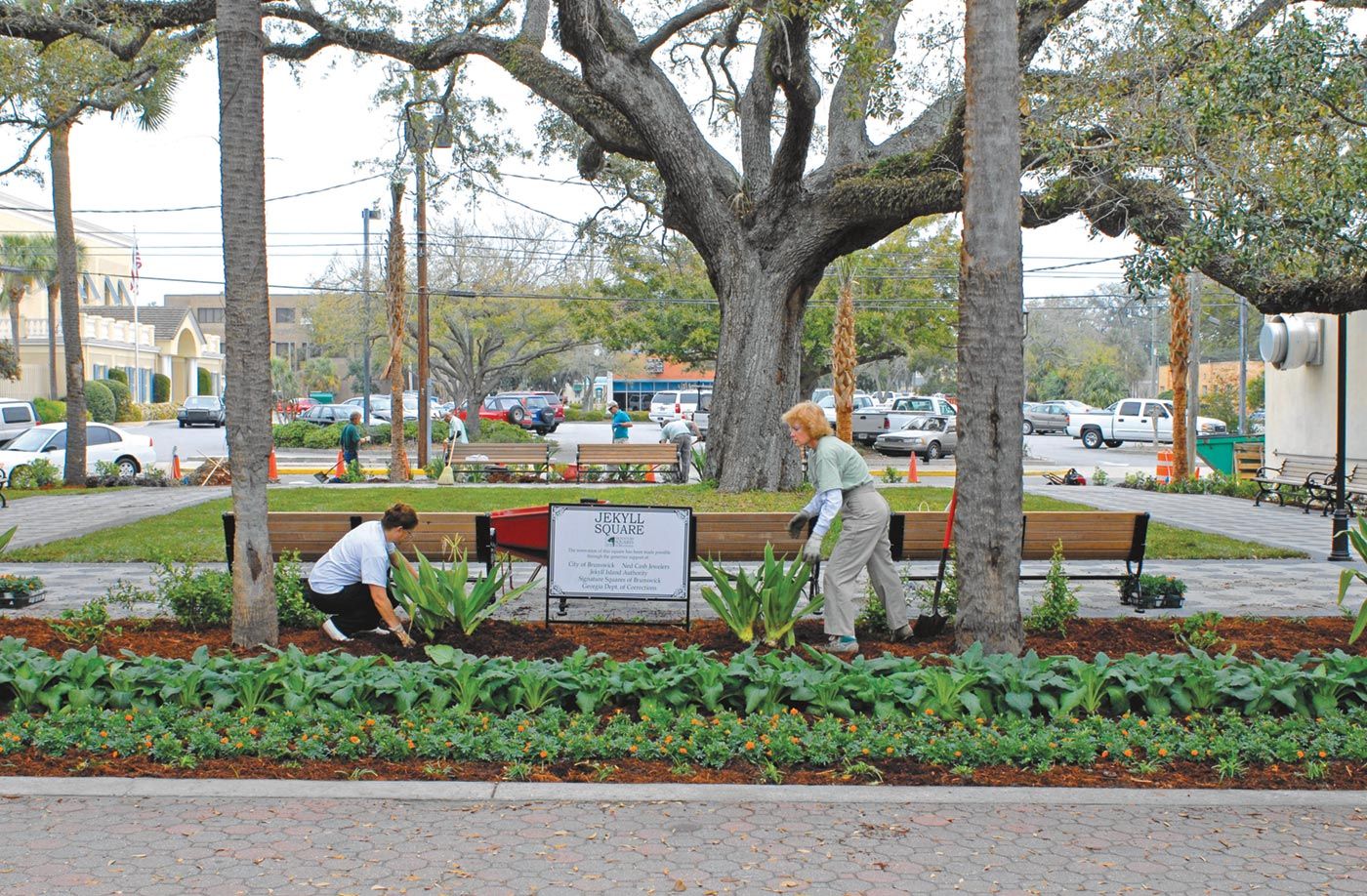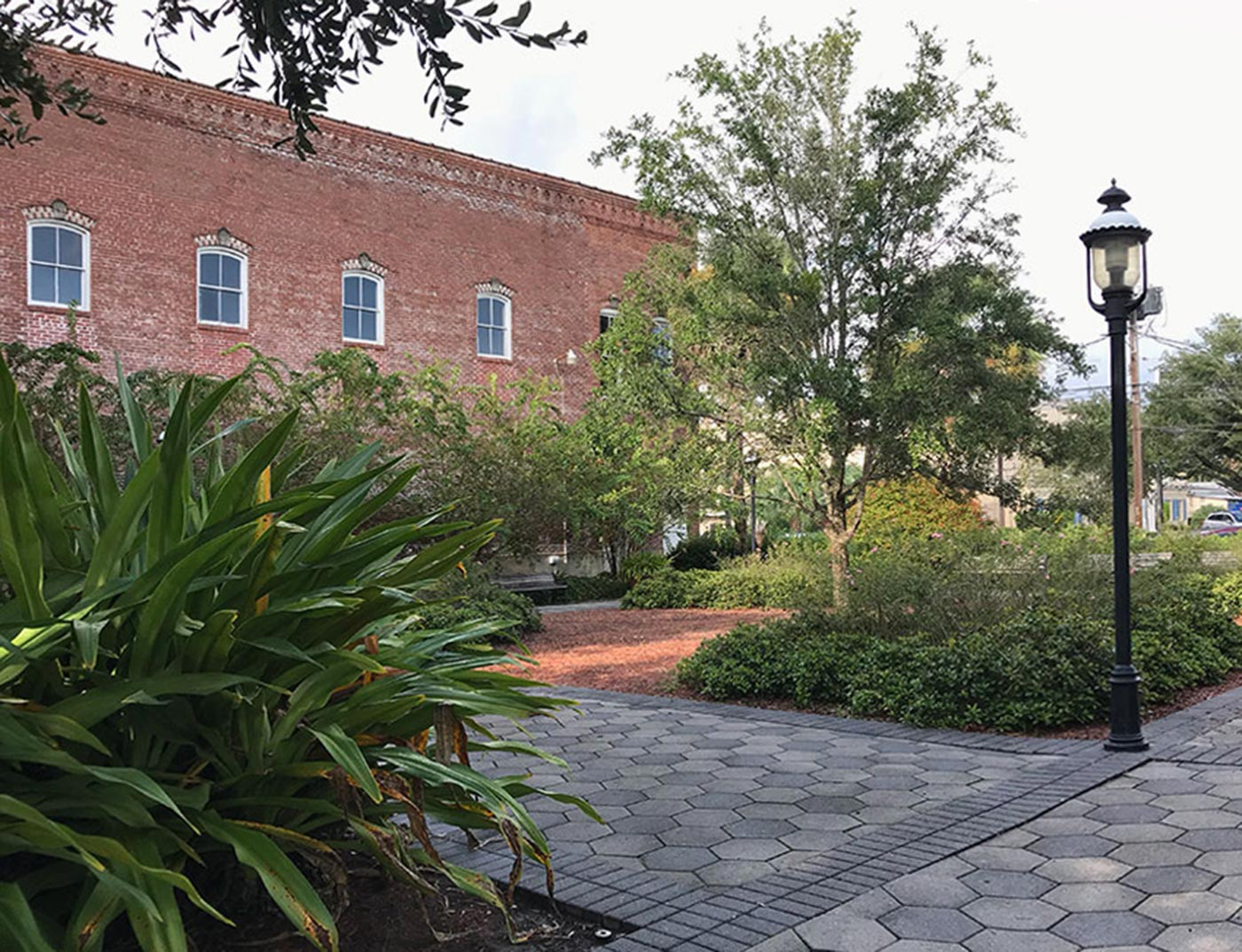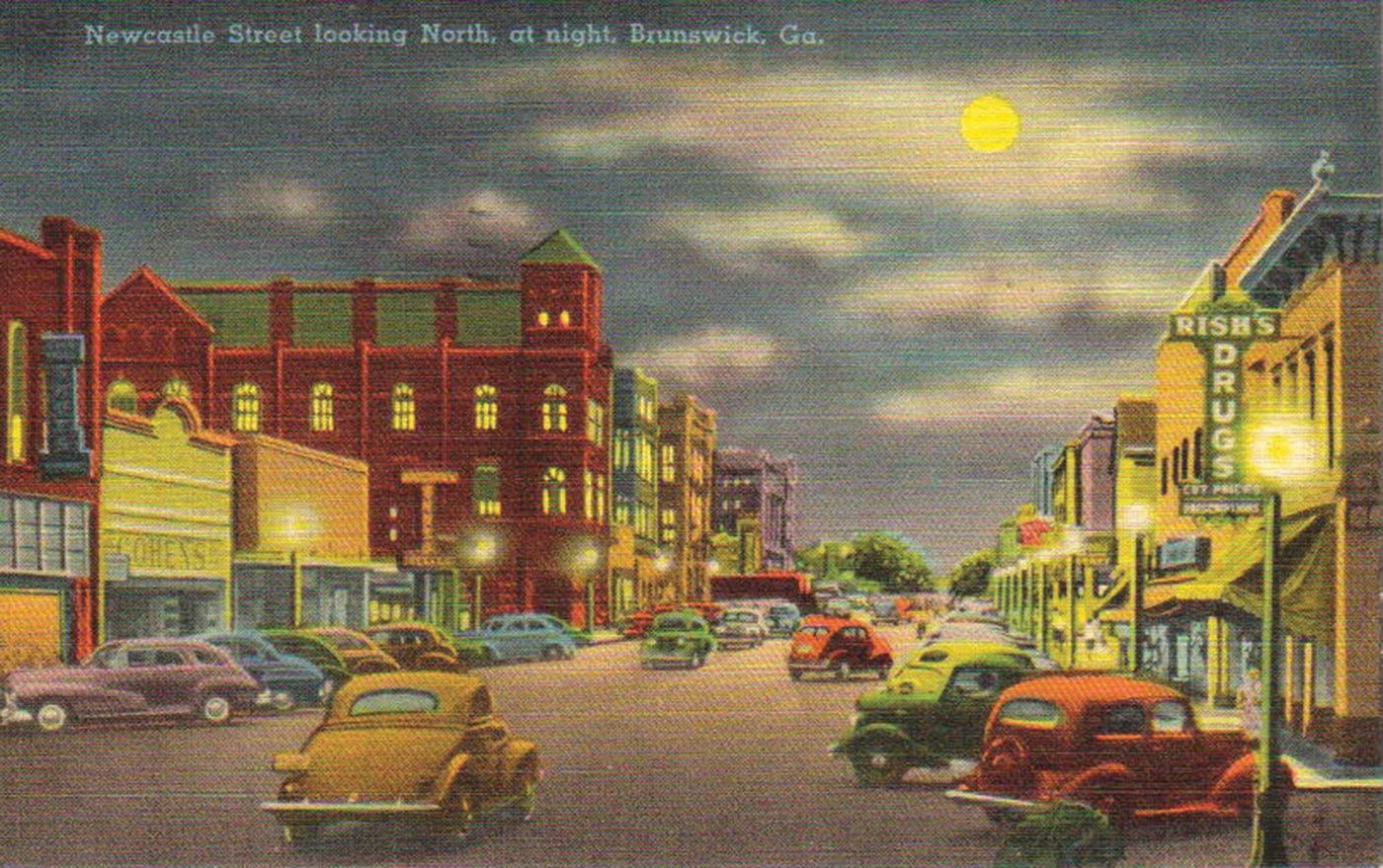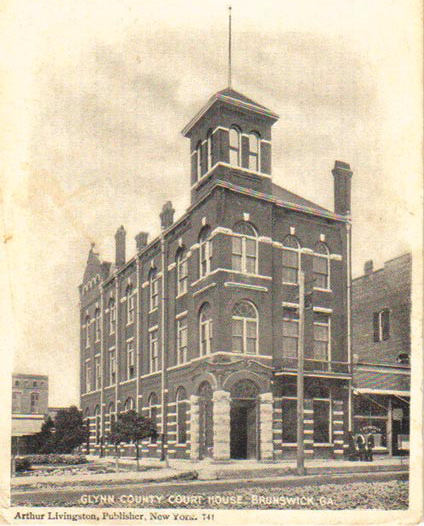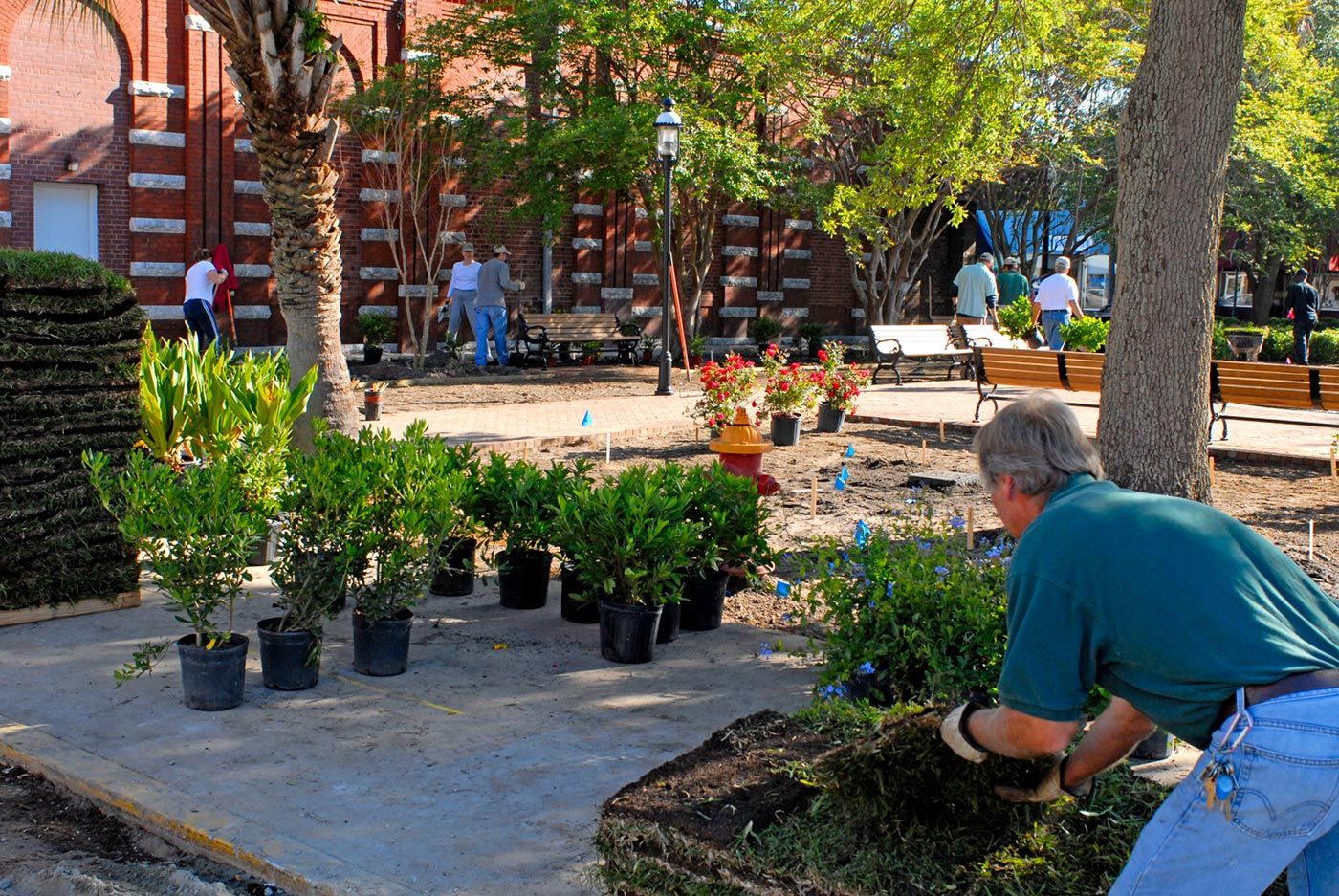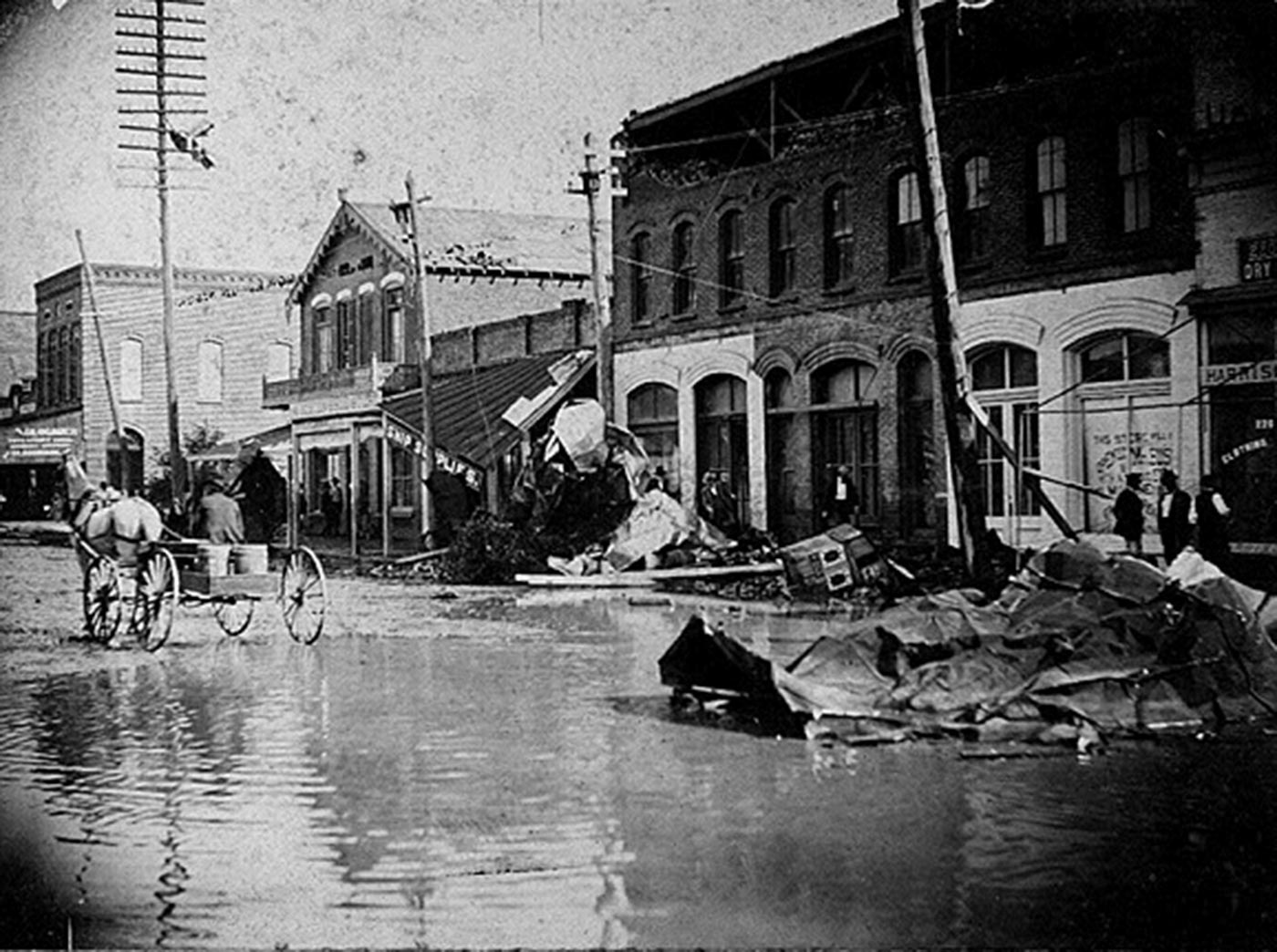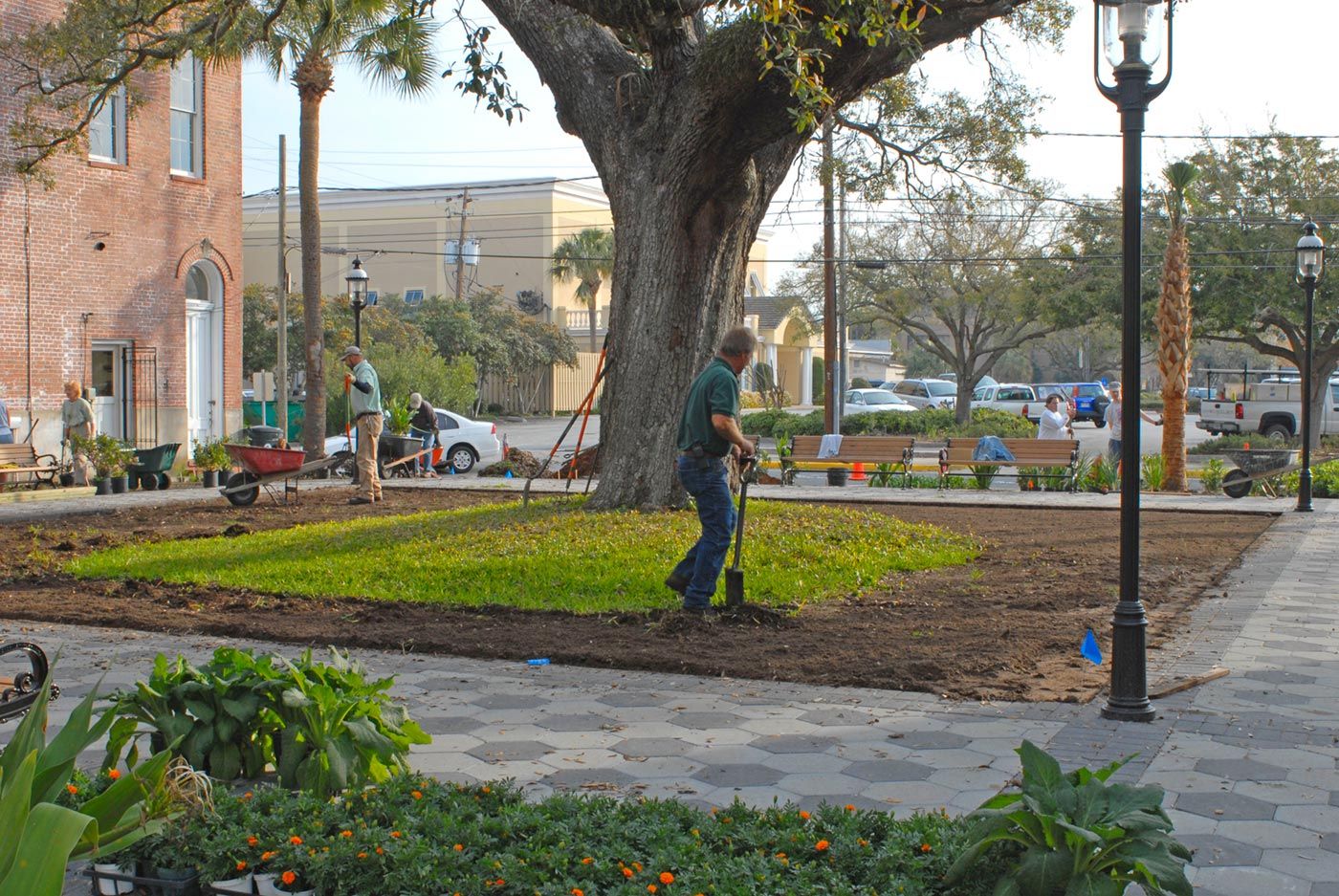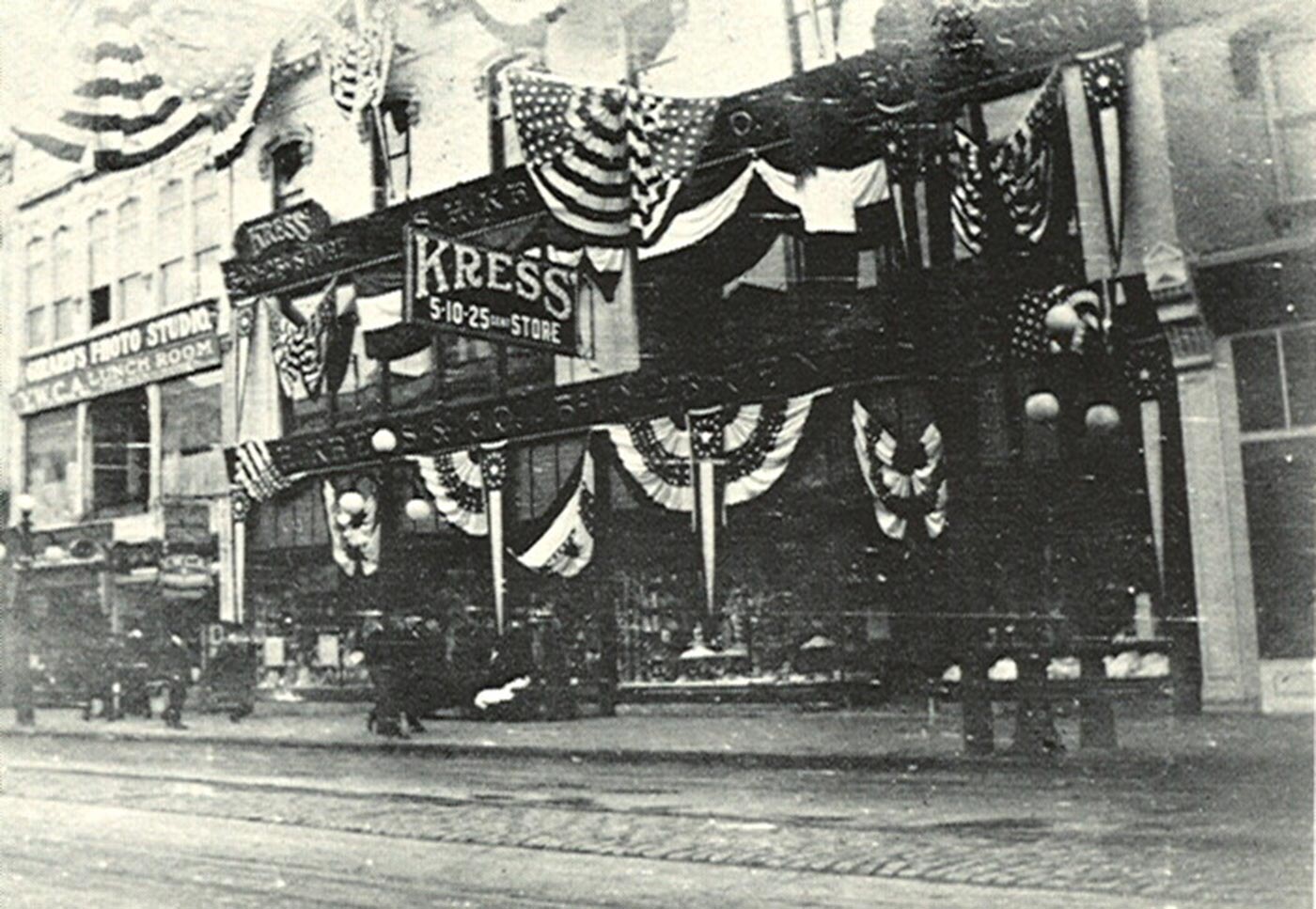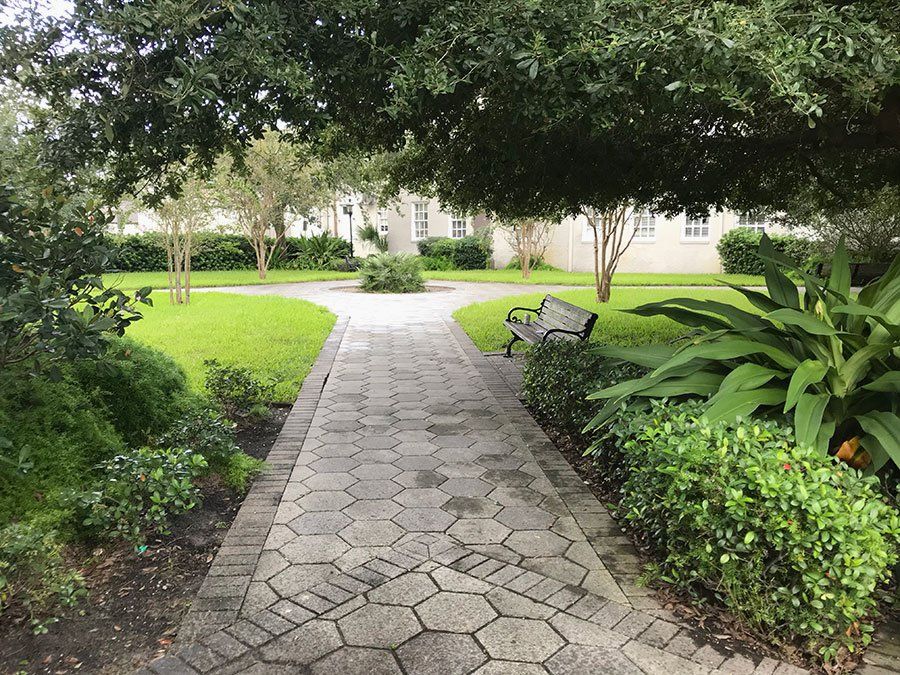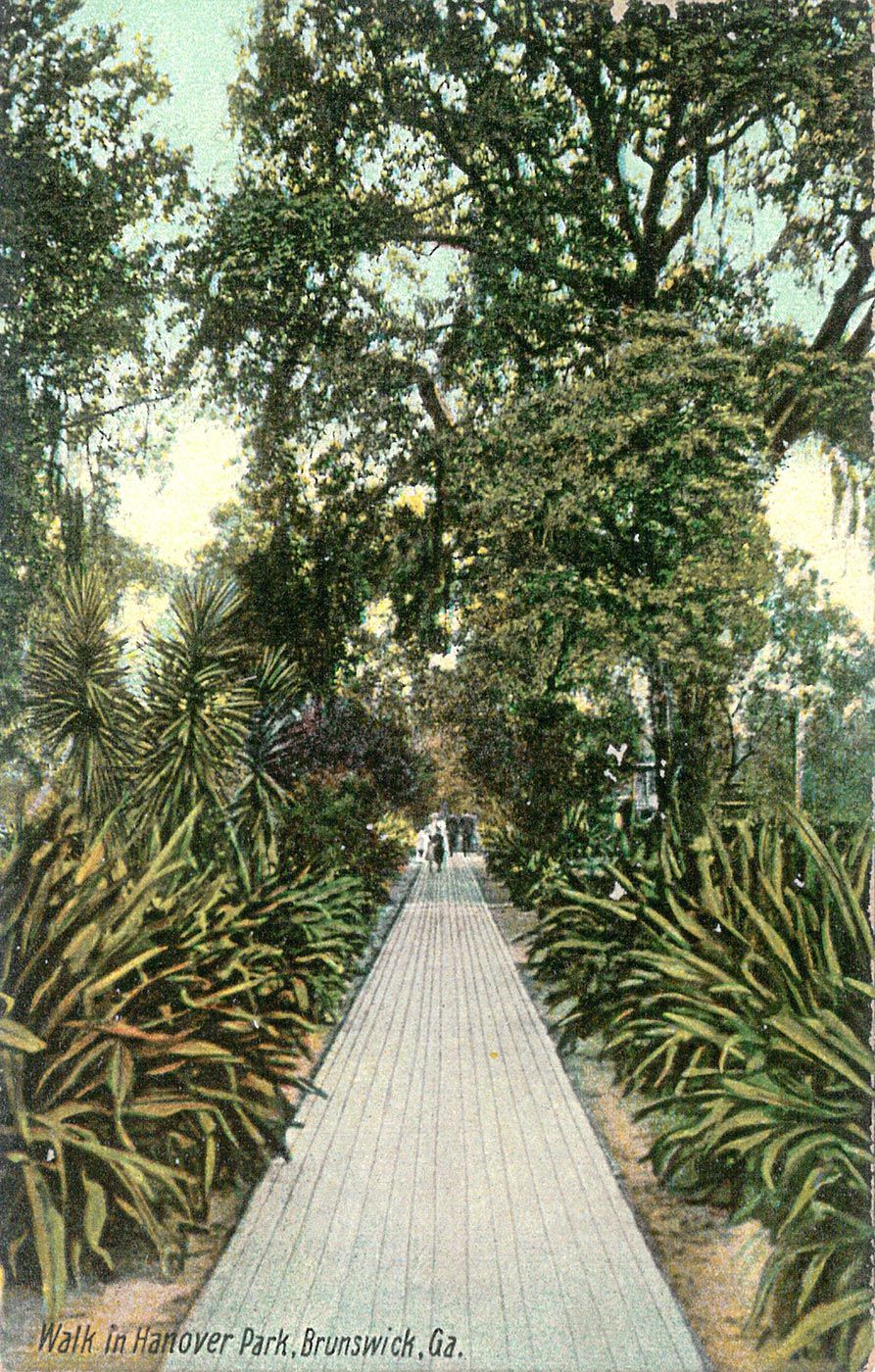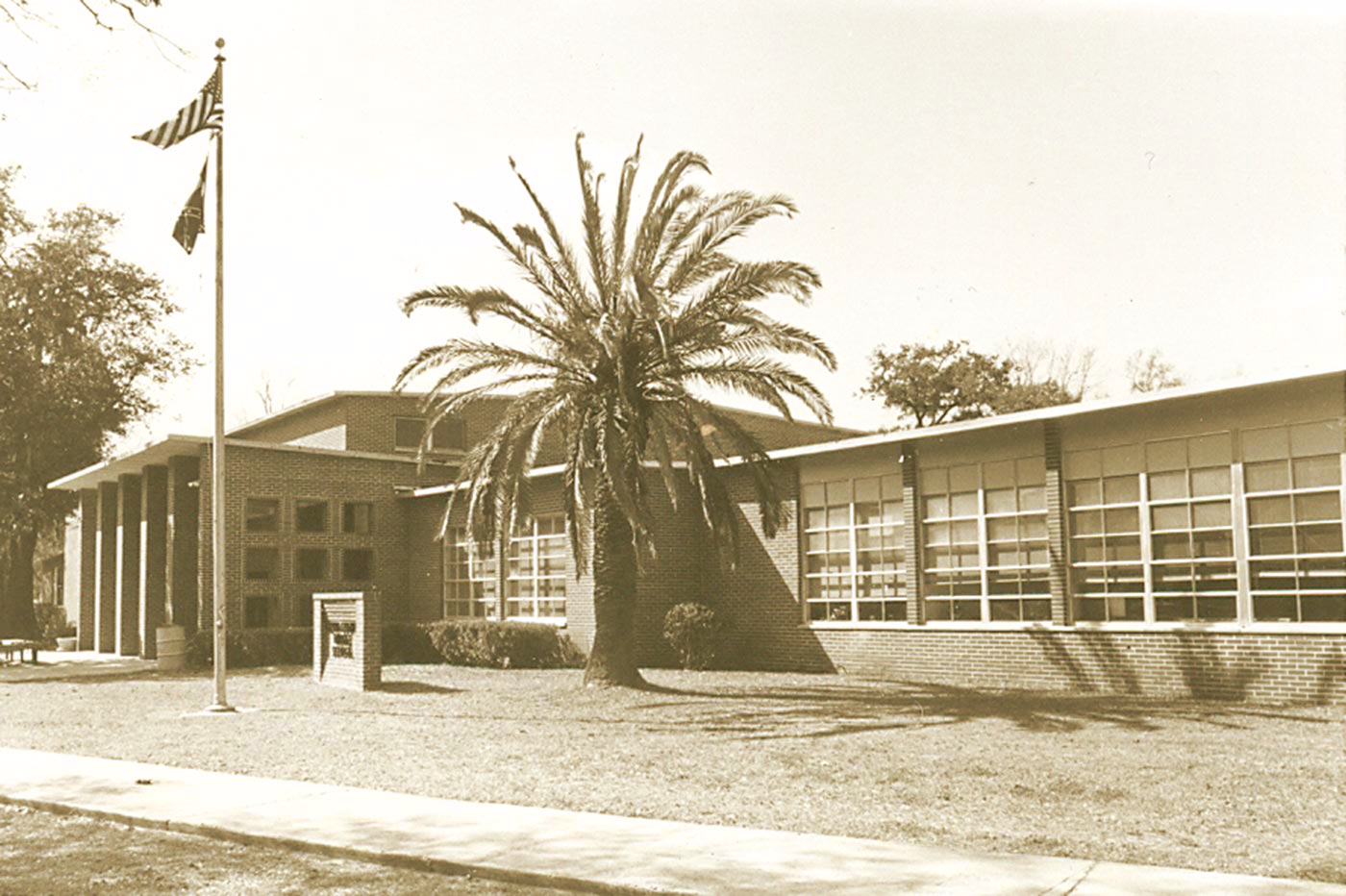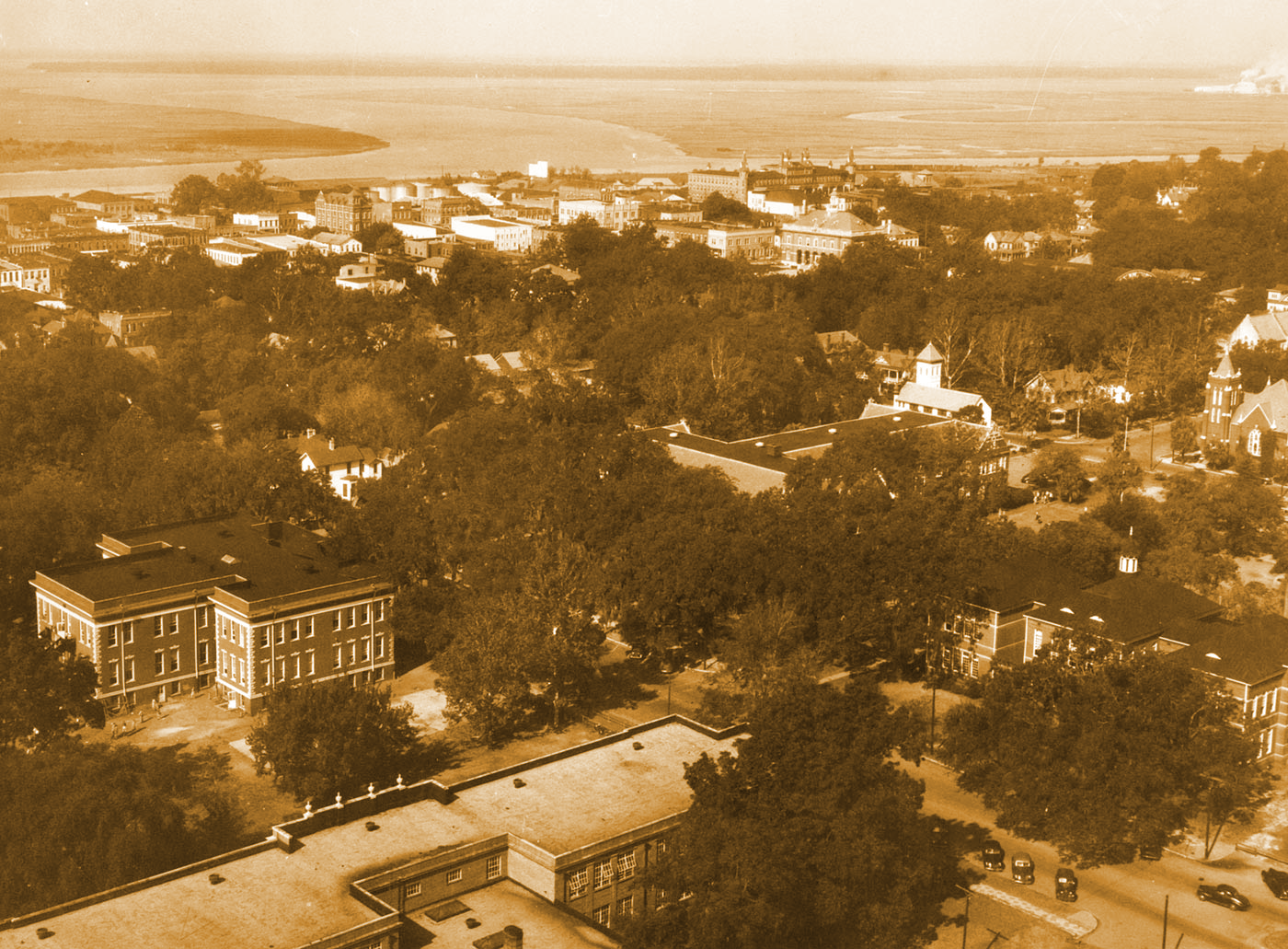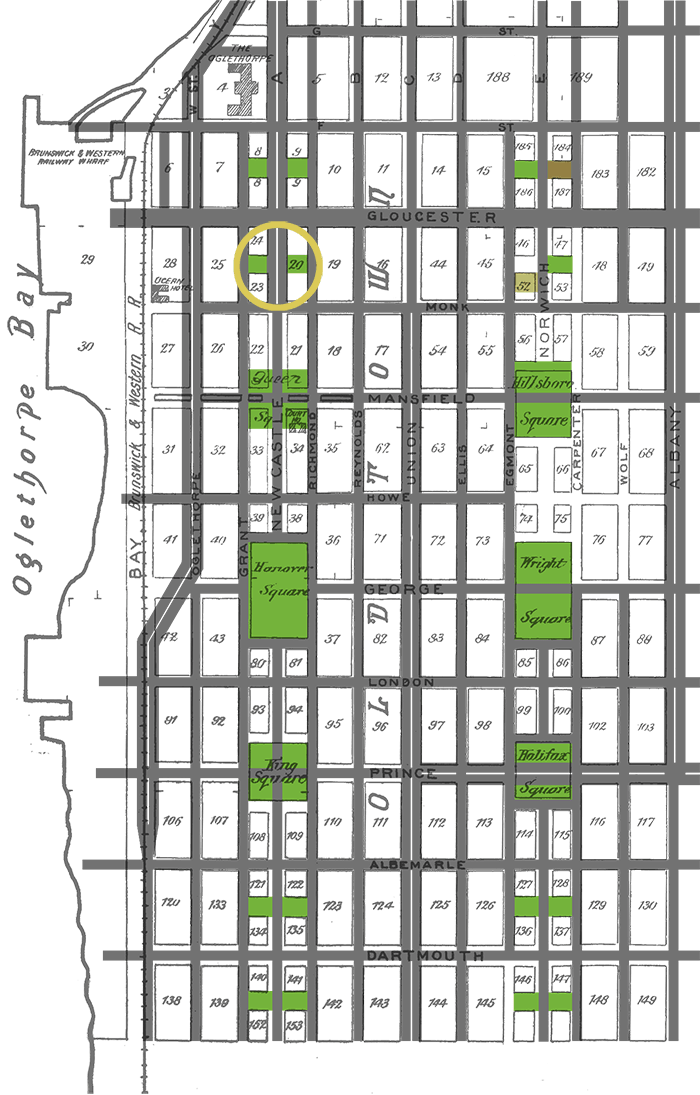White arrows denote location of the Square within the photo.
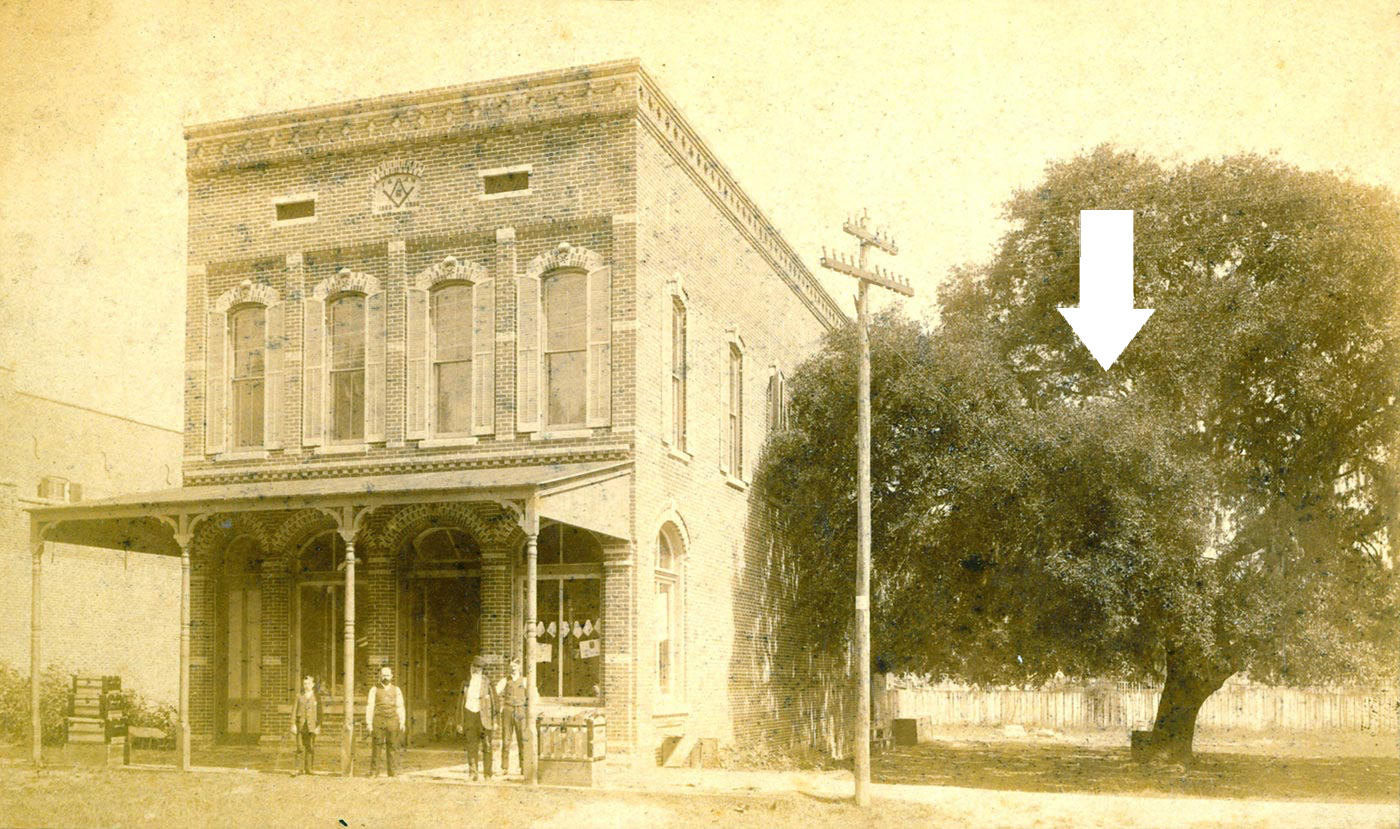
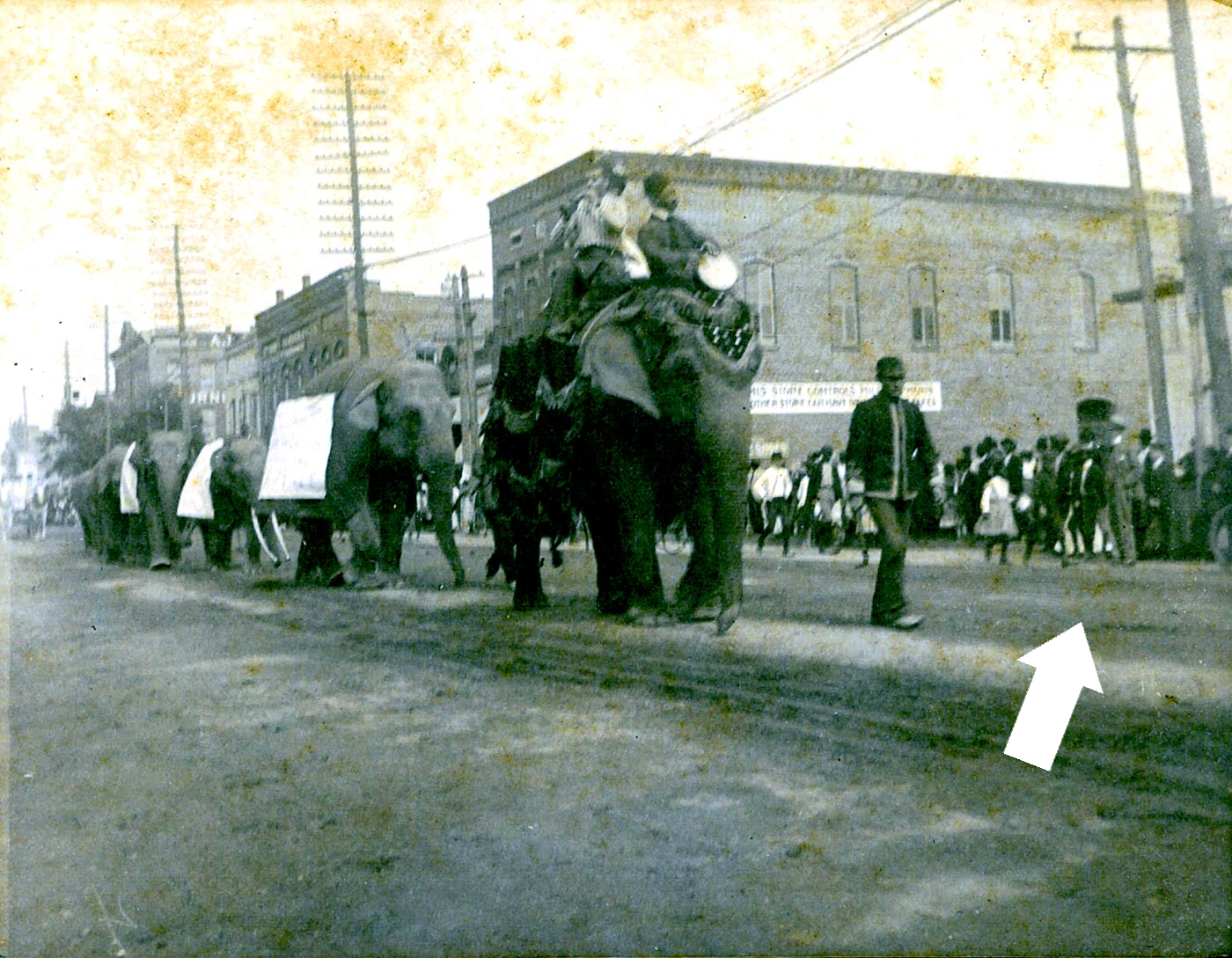
The Masonic building on the northern corner of Jekyll Square East.
Jekyll Square West
A long view of Newcastle Street shows the devastation of the 1898 hurricane. Inset: The cupola atop the bank building on Jekyll Square was blown away by the storm. Courtesy Coastal Georgia Historical Society.
NEWCASTLE STREET LOOKING NORTH, 1910. Courtesy Coastal Georgia Historical Society.
EXPLORE THE GOOGLE STREET VIEW MAP.
HOWARD E. BATTLE OF FLOYD'S BARBER SHOP. Courtesy Golden Isles Arts & Humanities Association.
Jekyll SQUARE EAST
NEWCASTLE STREET LOOKING NORTH FROM JEKYLL SQUARE. Courtesy Golden Isles Arts & Humanities Association.
EXPLORE THE GOOGLE STREET VIEW MAP.
Debris from the 1898 hurricane littered Newcastle Street after the storm passed. Courtesy Golden Isles Arts & Humanities Association.
Native Americans in full tribal splendor delighted Brunswick’s citizens when the John Robinson Circus came to town in 1895. Courtesy Coastal Georgia Historical Society.
JEKYLL SQUARE EAST RENOVATION, 2008. Courtesy Troup Nightingale, Southeastern Photography.
An Old Tree, A New Legacy
As time marches on, plans sometimes have to adapt. Such was the case of Jekyll Square East. In 2016, the grand old Live oak that shaded downtown visitors for generations had completed its life cycle and posed a considerable hazard to nearby buildings, people and infrastructure. The decision was made to remove the tree in July of that year. Through community partnerships with the Live Oak Garden Club, Southeast Nursery and Sea Island Company Landscaping, a new Live oak tree was planted to shelter the square far into the future.
JEKYLL SQUARE EAST AFTER TREE REPLACEMENT AND RE-LANDSCAPING.



